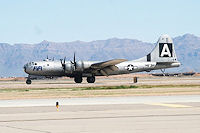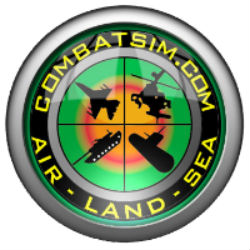 The US Strategic Bombing Campaign of Japan June 1944 – August 1945, Part 1
The US Strategic Bombing Campaign of Japan June 1944 – August 1945, Part 1
By John Dudek @ The Wargamer
Looming out of the warm spring darkness, a bomber stream formation of 68 US Army Air Force four engine Boeing B-29 Superfortress heavy bombers made landfall well over the Japanese home island of Kyushu around midnight on 15 June 1944. The formation’s lead plane was piloted by Brigadier General Laverne G. Saunders. Japanese searchlights with their multi-million candlelight arcs snapped on ahead of them in the distance, sending up numerous probing shafts of ultra brilliant light skyward searching for the oncoming bombers. The plane’s navigator spoke. “General, we’re approaching the target and are on the bomb run.” In response. Saunders said. “Bombardier, the plane is now under your control.” “Roger!” the bombardier replied. The man sitting in the “greenhouse” glass nose of the plane and gave the “OK signal” with his hand held over his head. He then leaned over his Norden bombsight and began making minute adjustments to the plane’s course and speed; all the while fighting the only recently discovered high altitude jet stream winds that buffeted the bomber and all others in the formation. Tail winds with this speed and velocity could propel a high flying aircraft to over 500 mph while a head wind could slow their progress down to a crawl. Either eventuality could easily spoil the bombardier’s aim. The bomber’s target was the Imperial Japanese Iron and Steel Works at Yawata. Heavy but inaccurate flak artillery fire exploded brightly around the bomber stream but caused little to no damage. In addition, there were no Japanese night fighter planes anywhere in sight. The bombardier soon called out “Bombs away!” as the first of 107 tons of bombs cascaded downward towards the steel works. The bomber formation effected a long, lazy turn away from the target to return to their newly built air bases in Nationalist China. The bombing mission appeared to have been a success. However, subsequent photo reconnaissance flights sadly revealed poor results from the raid with only one bomb striking within the industrial complex due to both the high speed jet stream winds and poor visibility over the target. However, this fact was mitigated by the knowledge that the raid on Yawata was the first aerial bombing raid on mainland Japanese since the pin-prick Doolittle aircraft carrier launched air raid over two years before. The US news media was absolutely elated by the news of the Yawata bombing raid, proclaiming that this was but the first of many more air raids that would soon knock Japan completely out of the war. For once they were completely correct.

